Abstract
Pigeons learned a free operant, go/no-go discrimination between stimuli produced by rapid alternation of different features on the response key. The 0° —B compound consisted of a vertical black line on a white background (the 0° feature) alternated with a blank white field (the B feature), with successive 0.75-sec feature on periods separated by 0.20-sec dark periods. Pecks at the alternating 0° and B features were recorded separately. When pecks at the 0°—B compound were reinforced and pecks at the B—B stimulus (repeated brief presentations of the B feature) were extinguished, the birds pecked more at the 0° feature than at the B feature in the 0°—B compound; subsequently, decremental line-tilt generalization gradients were obtained. When pecks at B—B were reinforced and pecks at 0°—B were extinguished, the rate of pecking at the 0° feature decreased to a low level much more rapidly than did the rate of pecking at the B feature in the 0°—B compound; incremental line-tilt gradients were obtained. Following training with pecks at 0°—B reinforced and pecks at 0°—0° extinguished, incremental line-tilt gradients were obtained, whereas the gradients were decremental following training with 0°—0° reinforced and 0°—B extinguished.
Full text
PDF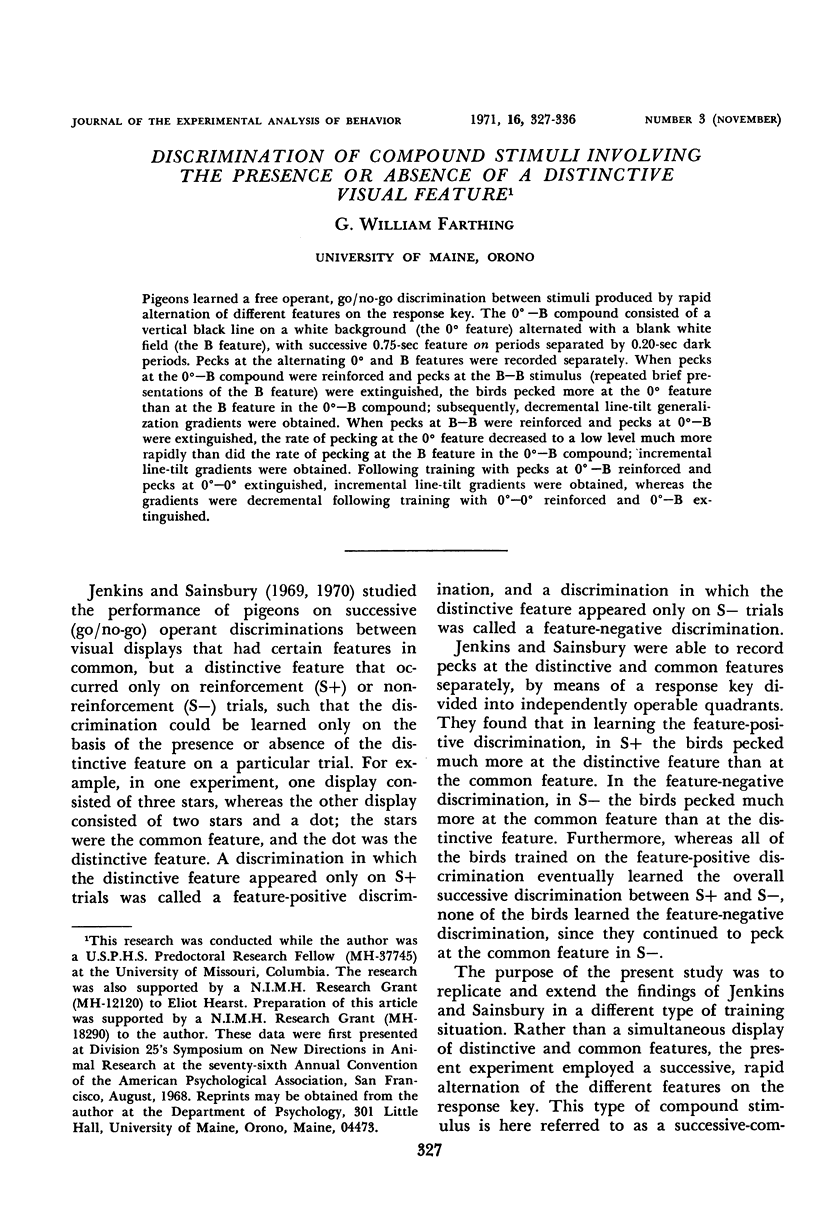
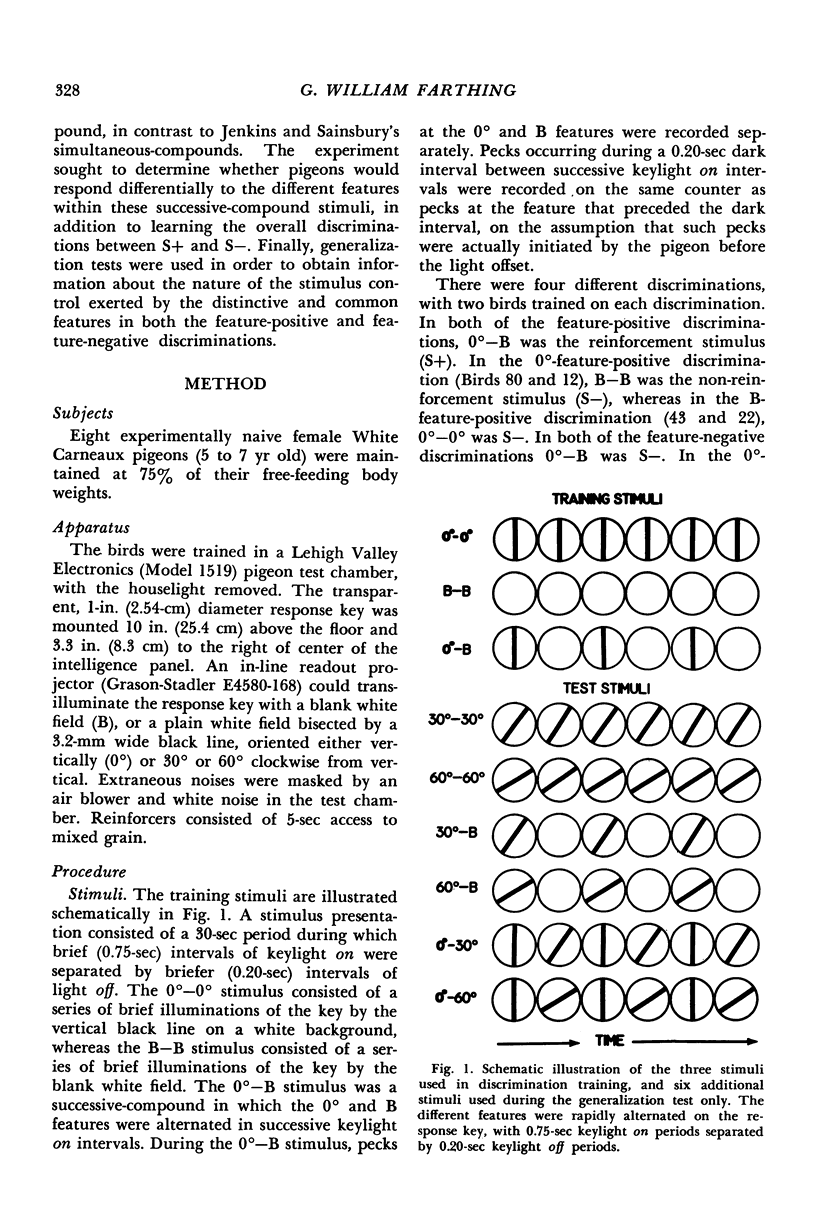
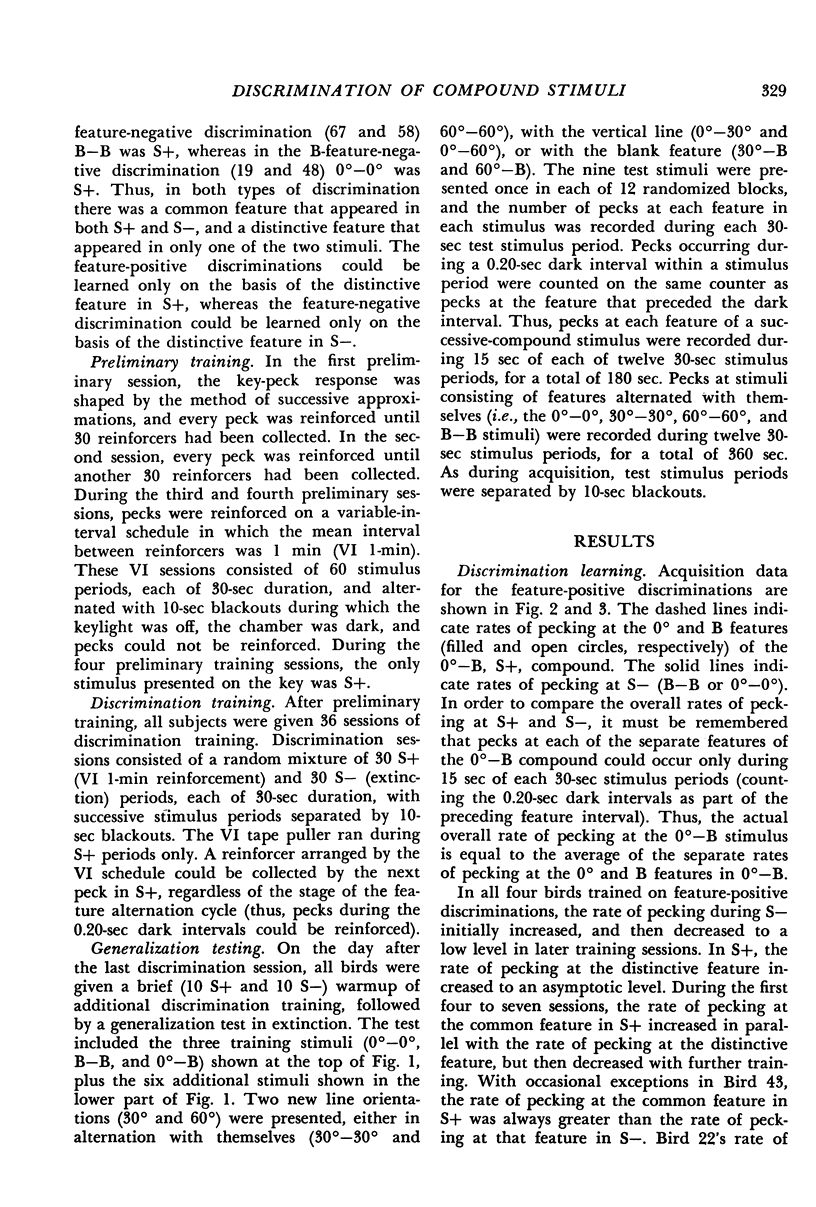
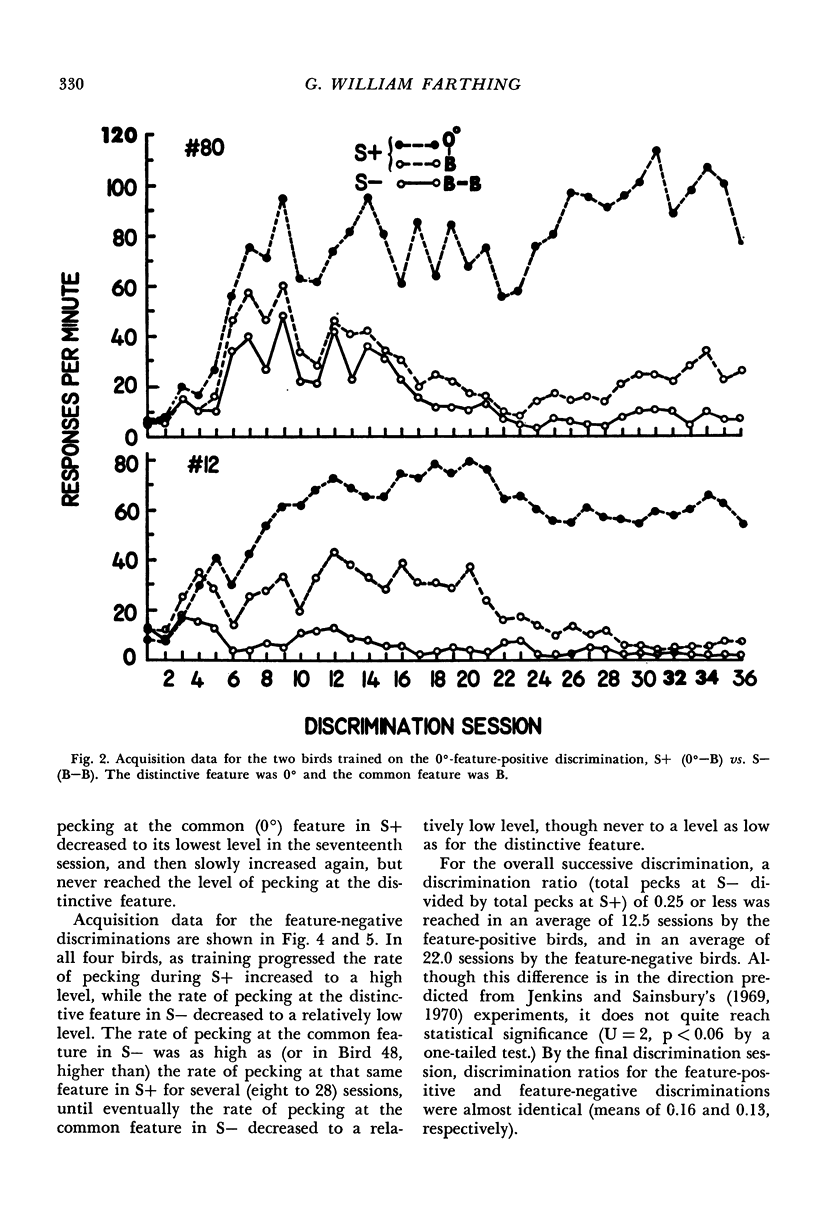
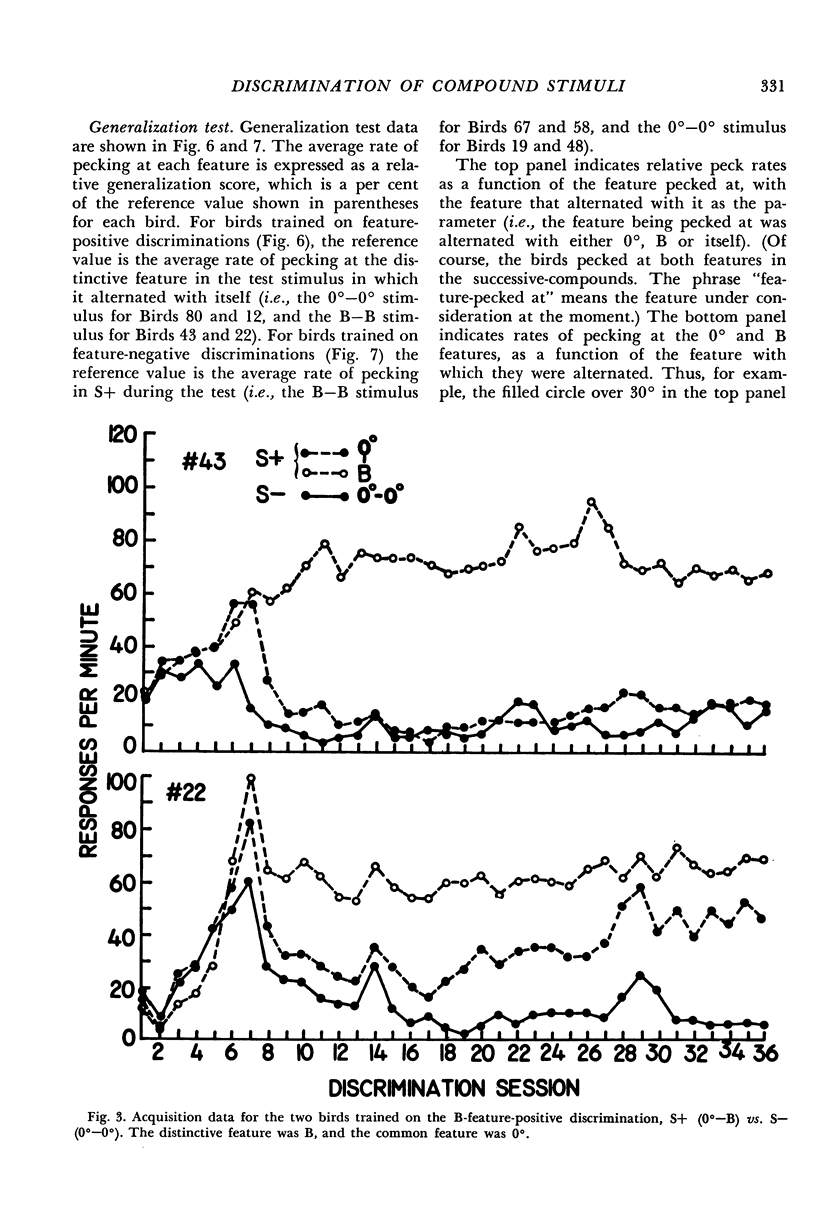

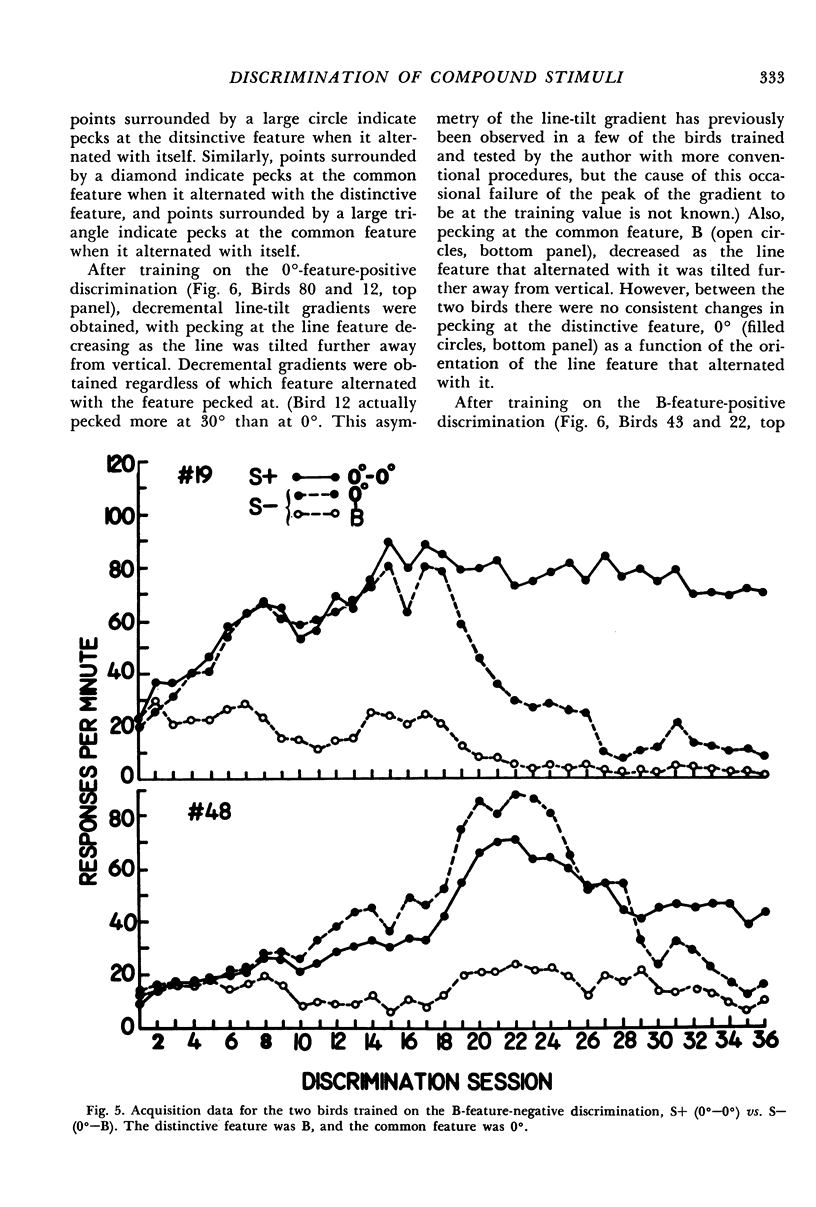
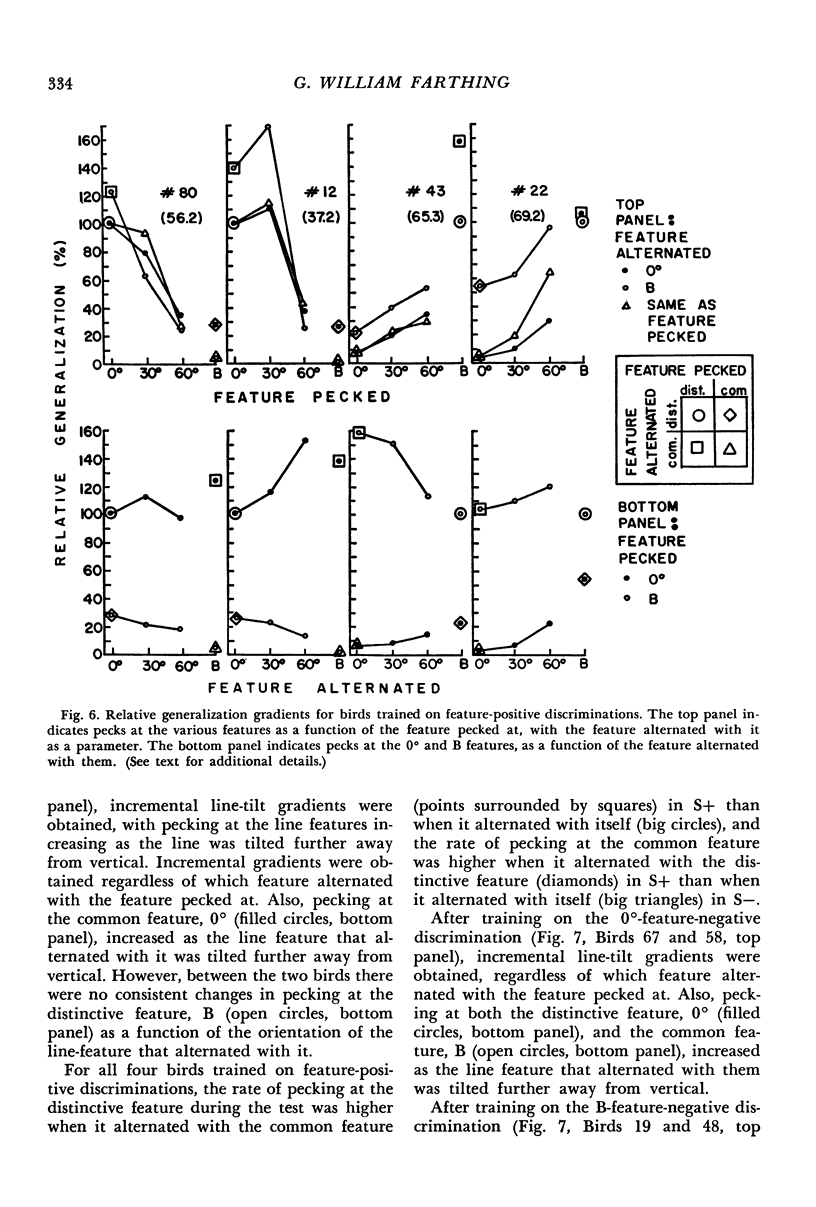
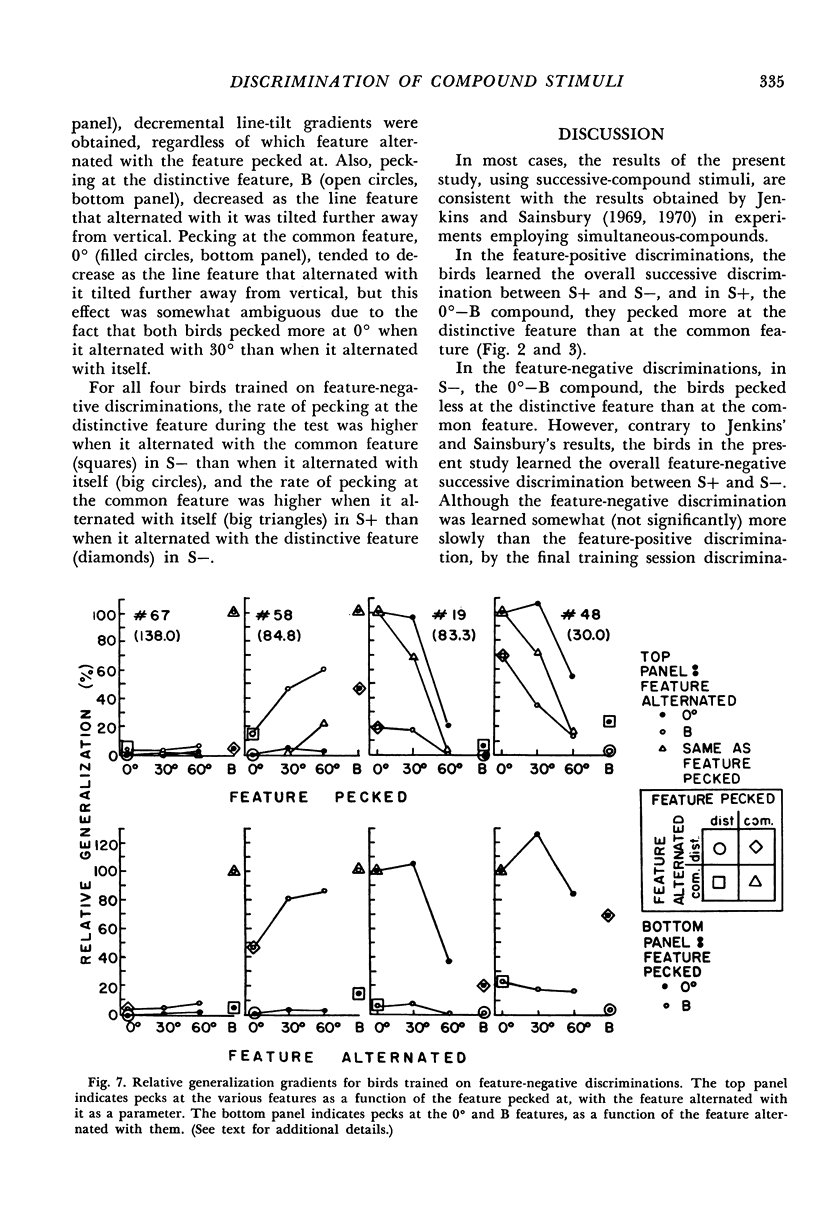
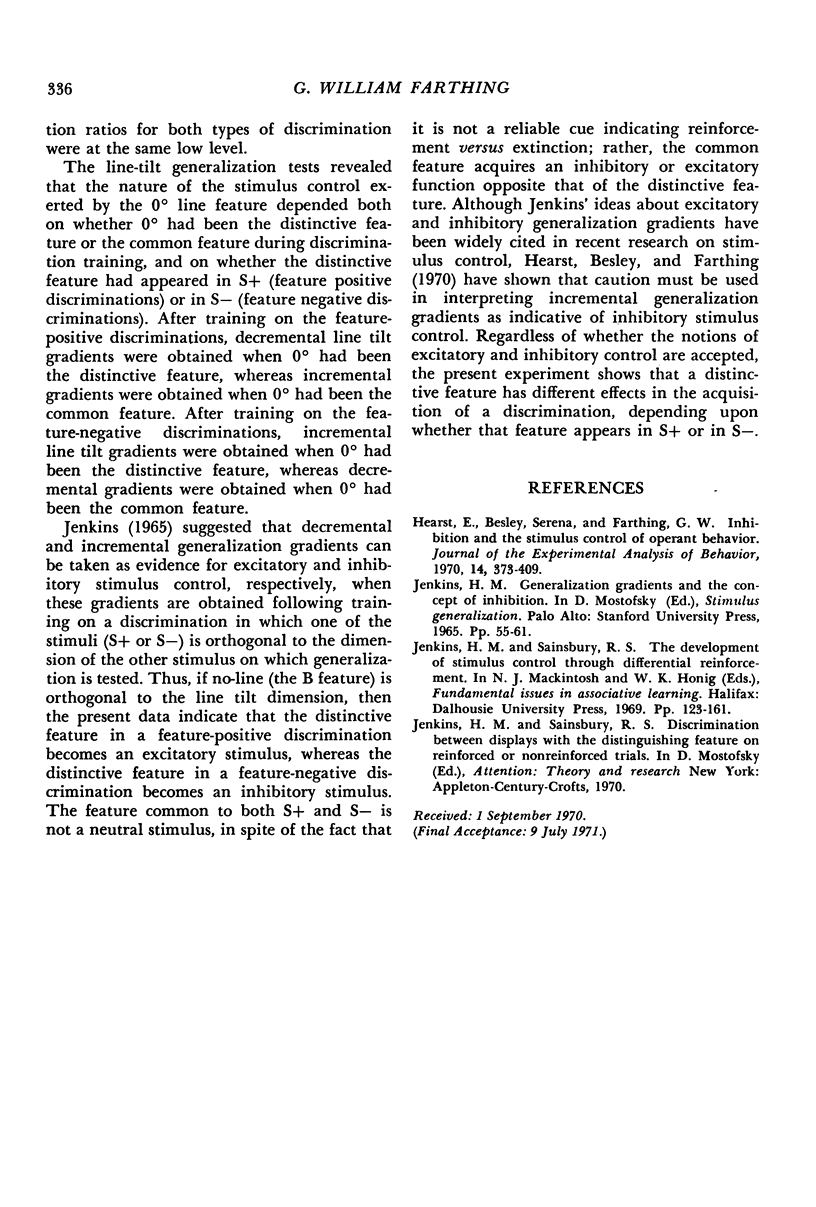
Selected References
These references are in PubMed. This may not be the complete list of references from this article.
- Hearst E., Besley S., Farthing G. W. Inhibition and the stimulus control of operant behavior. J Exp Anal Behav. 1970 Nov;14(3 Pt 2 Suppl):373–409. doi: 10.1901/jeab.1970.14-s373. [DOI] [PMC free article] [PubMed] [Google Scholar]


